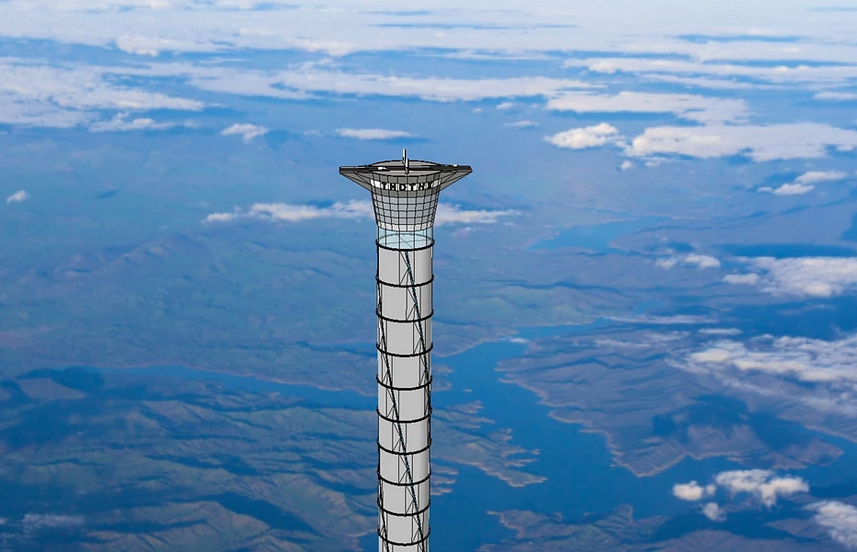Attention space enthusiasts: the space elevator may be one step closer to reality. Canadian space firm, Thoth Technology, was recently granted both US and UK patents for an elevator designed to be propelled into Earth’s stratosphere.
Called the ThothX Tower, the inflatable free-standing structure will be complete with an electrical elevator and will stretch 12.5 miles above Earth. Astronauts would ascend via elevator, and from the top of the tower, space planes could launch in a single stage to orbit, returning to the top of the tower for refueling. With the pneumatically-pressured tower serving as a lift-off point, this could potentially save more than 30% of the fuel used for a conventional rocket.

The ThothX Tower reaches 12.5 miles high. Image: The Guardian.
Traditionally, regions above 31 miles in altitude can only be reached by rocket ships,where mass is expelled at a high velocity to achieve thrust in the opposite direction, according to Brendan Quine, the tower’s inventor. In the patent he said that rocketry is “extremely inefficient” and that a space elevator would use less energy. By using this type of system, the work done is significantly less, as no expulsion mass is carried to work against gravity, and because lower ascent speeds in the lower atmosphere can eliminate atmospheric drag.
Quine also wrote that the elevator cars can also be powered electrically or inductively, eliminating the need to carry fuel. This technology offers a way to access space through reusable hardware.
Though an elevator to space has been a longstanding idea as an alternative to rocket ships, it has been believed as unfeasible because no known material can support itself at such a height. Thoth’s design side-steps this problem by building the elevator to 12.5 miles, so it sits within the stratosphere rather than in the geostationary orbit, where satellites fly.
The tower could also be used for wind-energy generation and communications, according to Thoth Technology.
Source: The Guardian
Advertisement
Learn more about Electronic Products Magazine





